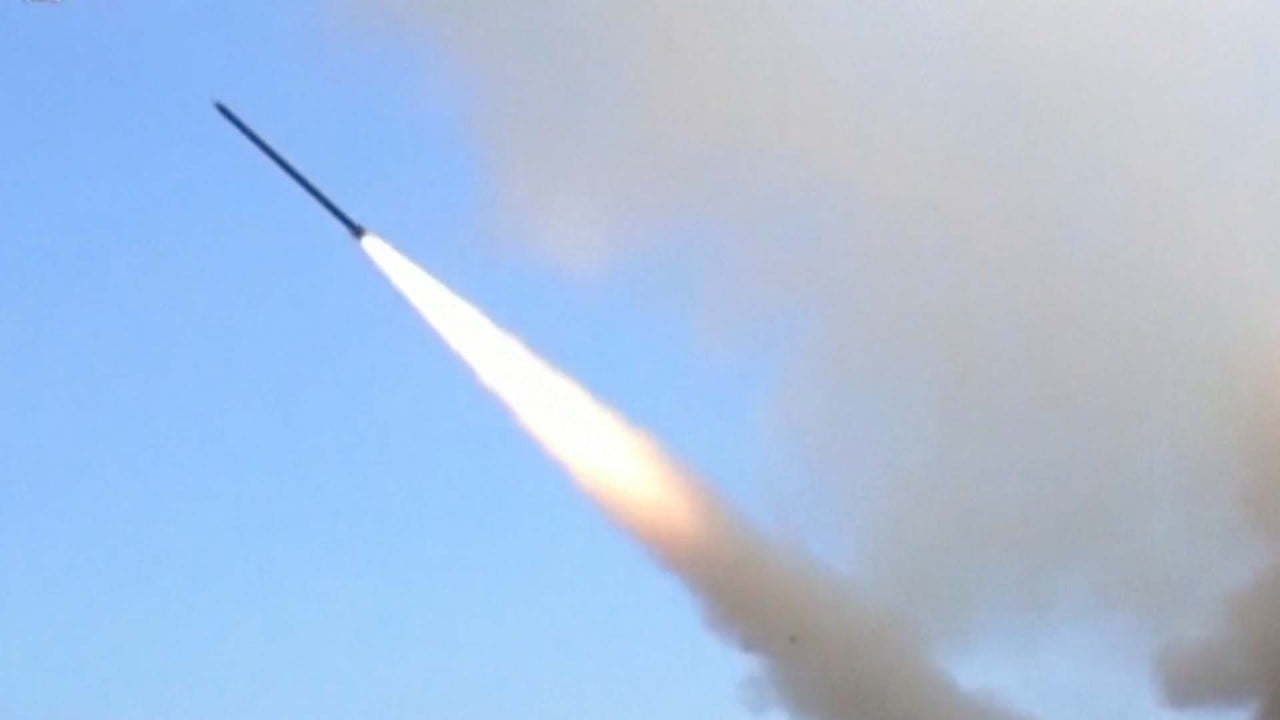
PLA adopts nuclear deterrence to stop foreign intervention on Taiwan: analysts
- Observers say Beijing is warning the US and Japan to stay out of a potential clash over the island, but it will exercise caution to avoid full-blown conflict
- Russia has used the strategy to discourage American and Nato involvement in the war in Ukraine, according to retired Chinese colonel
Videos showed other Dongfeng nuclear-capable missiles – including the road-mobile DF-27, DF-16 and DF-15B – moving through city streets.
All Dongfeng-series missiles are capable of delivering nuclear warheads, while the DF-5B ICBM has a range of up to 15,000km (9,321 miles), enabling it to hit North America.
China calls on nations to cut nuclear stockpile and backs ‘no first use’
Yue compared it with Russia’s nuclear threats after the invasion of Ukraine which, he said, had been successful in deterring the US and Nato from directly intervening in the war.
“Putin’s experience inspired Beijing that it’s a workable strategy to stop the US and Japan’s possible intervention in a future Taiwan contingency,” Yue said.
He said Beijing had stated that the military exercises were against Taiwan’s “pro-independence” camp.
“The missiles displayed on streets and those fired in war games are all conventional weapons … aimed at preventing the Taipei government from turning the Taiwan problem into an international issue, something similar to a ‘Ukraine issue’ for Beijing.”
Zhou said Beijing would stick to the rule that nuclear weapon development should aim to stop a war – not trigger one.
On August 4, the USS Ronald Reagan sailed northeast and maintained a distance of at least 1,000km – the range of DF-15B and DF-16 missiles – from Taiwan as the PLA rocket force launched the missiles near the island.
China hits test plane in new missile trials ahead of US-India army drills
China said there was no exclusive economic zone in the waters where the missiles landed because the two nations had not agreed on the limits.
Cheung Mong, an associate professor with the School of International Liberal Studies at Waseda University in Japan, said the nuclear deterrence strategy would not only push Tokyo closer to Washington but also encourage the Japanese government to expand its military capability.
“It’s very risky to copy the Russian mindset and strategy – it would only backfire to encourage Japan to accelerate military expansion,” Cheung said.
Perceiving a threat from a rising China, the administration of former prime minister Japanese Prime Minister Shinzo Abe had suggested reinterpreting the country’s post-war pacifist constitution to permit a greater role for its Self-Defence Forces and to change Article 9, which renounces war and bans Japan from maintaining armed forces with aggressive capabilities.
“The Ukraine war has brought great impact to many Japanese, especially their security thinking, with mainstream pacifists starting to doubt whether their beliefs would lead to an invasion,” Cheung said.
“The pacifist mindset would be completely changed if a Taiwan contingency takes place, as a recent war game scenario showed Japan couldn’t escape if US military bases in the country were attacked by the PLA.”
It’s very risky to copy the Russian mindset and strategy – it would only backfire to encourage Japan to accelerate military expansion
Andrei Chang, editor-in-chief of the Canadian magazine Kanwa Asian Defence, said alert levels on the PLA Rocket Force’s missile bases had been elevated, triggering suspicions that Beijing was moving closer to a fight over Taiwan.
Chang described it as “very similar to Putin’s nuclear deterrence tactics, but it’s an unusual move in peacetime in areas across the Taiwan Strait”.




